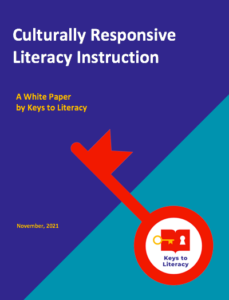
What is Culturally Responsive Teaching?
Culturally Responsive Teaching is a pedagogy that recognizes the importance of meeting students where they are culturally and linguistically. It puts students at the center of instruction that validates and affirms students’ identities, and gives students from historically marginalized communities an equitable education experience. When culturally responsive educators validate and affirm students and bring them where they need to be academically, students are more likely to feel recognized, valued for their contributions, and eager to learn. (Hollie, 2017)
Educators use varying definitions that emphasize different aspects of culturally responsive teaching but there is a common theme among all definitions. It is a strategy for engaging all students where teachers
- use culturally diverse and inclusive practices that recognize and validate students’ home cultures and languages as assets;
- communicate and hold all students to the same high expectations and provide instruction so all students can access the same grade-level content;
- are aware of, and take into account linguistic and dialect differences;
- include culturally diverse inclusive practices and curriculum; and
- use classroom books and sources that enable students to see themselves represented in the text they read.
In a white paper titled Culturally Responsive Literacy Instruction, Keys to Literacy summarizes these basic tenets of culturally responsive teaching and provides a list of instructional suggestions that are specific to reading instruction. Click here to access the document.
